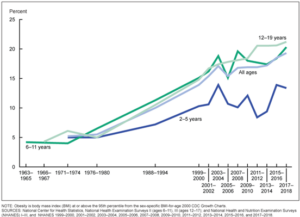It’s heartbreaking — and frustrating — that a U.S. senator single-handedly shot down the legalization of whole milk in schools, especially after it had overwhelming bipartisan support in the House. Who would have thought that whole milk could cause such a tizzy?
Back in 2010 the Healthy, Hunger-Free Kids Act was enacted, and among other nutritional standards, it aimed to trim down the fat on cafeteria trays in schools across America. One of the big hits was whole and 2% milk — it became illegal (yes, illegal) to serve them in schools! The reasoning behind this decision was that kids can drink skim milk and reap all the benefits and leave the fat out.
Many people inside and out of agriculture are still upset about the 2010 change to school lunch programs. The goal was to cut childhood obesity, a problem that has only gotten worse according to the Centers for Disease Control and Prevention.

By now everyone has heard the slogan, “Milk! It’s 97% fat free!” which was coined by a Pennsylvania farmer in 2019. That slogan, written across some wrapped bales, turned into the 97 Milk campaign, which has quickly gained popularity and support throughout the dairy industry.
The 97 Milk campaign is one of many that has fought for years to get whole milk offered in schools again.
The fight to keep whole milk out of youths’ hands is about the fat content they are consuming in their entire lunch, not just the milk. But many people argue that a little extra fat is swept over by all the benefits that milk can provide. Plus kids too often don’t drink 1% or skim milk — they just don’t like the taste.
With milk fat being necessary to aid in absorption of fat-soluble vitamins, and milk actually containing 13 essential nutrients itself, you would think that allowing whole milk in schools wouldn’t be a fight!
Even The New York Times published an article how whole milk is healthier! The author, Alice Callahan, who often writes about health and nutrition, states that the nutritional guidance saying that milk fat isn’t healthy dates back to the 1980s. A cardiologist and professor from Tufts University, Dr. Dariush Mozaffarian, was quoted saying that most studies don’t find any benefits to sticking with skim, the guidelines for our children’s lunches are quite outdated!
When whole milk was brought in front of the House of Representatives, it passed without a hitch. Seriously, it was a landslide 330-99 vote. And we thought it would be smooth sailing at the Senate.
A day later, the Senate threw up a bit stop sign to whole milk in our schools. But why?
Sen. Debbie Stabenow (D-Mich.) led the Senate to turn down whole milk because she feels that our preferences shouldn’t overrule dietary guidelines — no matter how outdated they may be.
This reasoning would be more understandable if it weren’t sooooo outdated. It’s frustrating. Dairy farmers aren’t profiting any more if schools provide whole milk versus skim; this truly is a problem of taste preferences. Most everyone prefers whole or 2% milk, so kids too often end up tossing the skim milk, wasting so many valuable nutrients.
Essential nutrients are classified as essential because people don’t tend to get enough of them. The fact that milk contains 13 essential nutrients is reason enough to give kids the milk they are most likely to drink!
Although whole milk will continue to be excluded from schools, there’s hope that someday it might come back to our kids.
Elizabeth Maslyn is a born-and-raised dairy farmer from Upstate New York. Her passion for agriculture has driven her to share the stories of farmers with all consumers, and promote agriculture in everything she does. She works hard to increase food literacy in her community, and wants to share the stories of her local farmers.



